Competition Shooting: Real World Occupations That Benefit From It
Posted by Junior Shooters
By: Kristopher Morrison 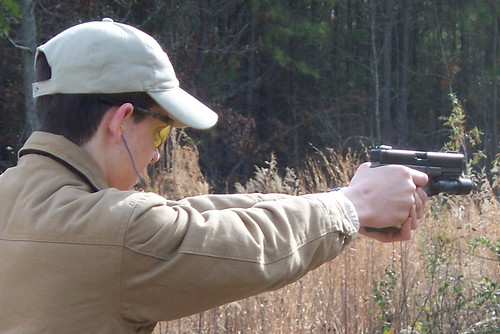
(Junior Writer For Kids By Kids)
Written as a Senior English project for Mrs. Graham – September 2008
As my senior year in high school approached, I knew I had to start looking into what topic I should research for my Senior Project. I had always loved to go shooting, and was a pretty good shot, so I decided that I wanted to do something with shooting.
After some Internet searches, I came across competition shooting and knew it was what I wanted to do. I had never tried to shoot while on the move, or as fast as I could. It was always shooting at the range at my grandfather’s house around the holidays, standing at the line and shooting merely for accuracy alone. When I saw what competition shooting was, I knew that it would be fun.
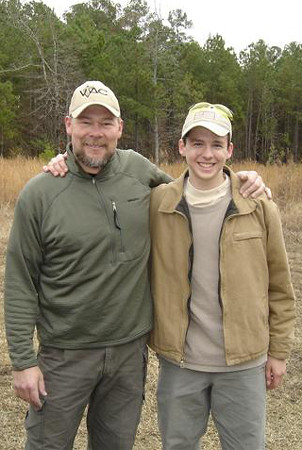 I needed a mentor for my project, who would teach me competition shooting so I asked my dad if he knew anyone who could help. He said that he knew Kyle Lamb, who used to work with my dad in the Special Forces. I thought that it would be outstanding to work with a guy who is an excellent shooter and an excellent teacher, which Kyle Lamb definitely is. Kyle now owns Viking Tactics, a shooting company. He agreed to work with me, despite his very busy schedule. Kyle let me interview him for my research paper and took me out shooting at a range in Fayetteville.
I needed a mentor for my project, who would teach me competition shooting so I asked my dad if he knew anyone who could help. He said that he knew Kyle Lamb, who used to work with my dad in the Special Forces. I thought that it would be outstanding to work with a guy who is an excellent shooter and an excellent teacher, which Kyle Lamb definitely is. Kyle now owns Viking Tactics, a shooting company. He agreed to work with me, despite his very busy schedule. Kyle let me interview him for my research paper and took me out shooting at a range in Fayetteville.
Shooting really helps me understand how important the 2nd Amendment is. Those who do not exercise their right don’t understand why it is in the Bill of Rights and often try to regulate its use. Competition shooting shows us that, more often than not, guns are used for good and self defense than for harm. If all of the anti-gun folks would come to a shooting competition they would see that there are good-hearted individuals competing and no real harm can come from it.
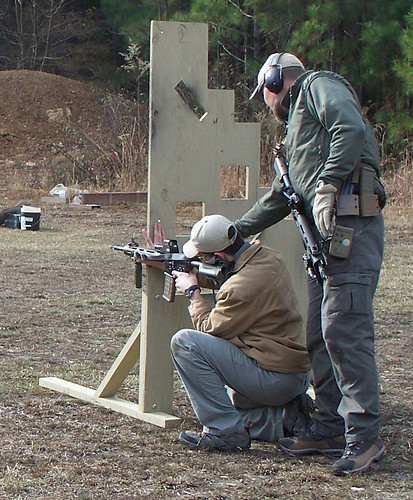 Since I do not have any place nearby to shoot, I do not regularly shoot. I mainly shoot around holidays when we travel to relatives’ houses or on long weekend when my dad takes me to a range at Ft. Bragg. But, not getting to shoot often does not damper my interest in shooting. I have been shooting since I was three years old and the skill is ingrained in me, and shows no signs of leaving anytime soon.
Since I do not have any place nearby to shoot, I do not regularly shoot. I mainly shoot around holidays when we travel to relatives’ houses or on long weekend when my dad takes me to a range at Ft. Bragg. But, not getting to shoot often does not damper my interest in shooting. I have been shooting since I was three years old and the skill is ingrained in me, and shows no signs of leaving anytime soon.
Walking through a course with different sets of targets on each side, shooting each as they come up to earn points within a set time period may seem a game to some, but it is truly an invaluable skill to many others. But these targets may very well be real threats to hundreds of people each day as they go about their jobs. This game is known as competition shooting. The skills, techniques and equipment used and learned in competition shooting may hold benefit for people in various occupations.
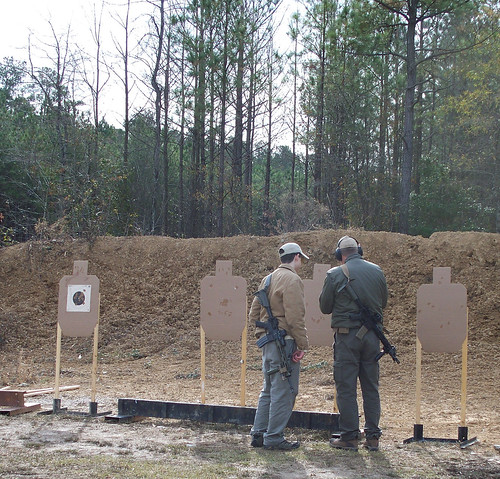 Not all occupations are a walk in the park. Those who put their lives on the line daily, to preserve order and protect the innocent often face threats from those who cause disorder. Police forces face danger everyday, “whether it be serving a warrant or patrolling the streets” (Rayburn), because they come in contact with violent and unruly individuals. Some competition associations such as the IDPA (The International Defensive Pistol Association) teach the use of cover and concealment while shooting targets in order to gain points. Cover is the process of getting behind an object that will stop bullets in order to protect oneself, while concealment is hiding behind an object that will not protect the shooter from bullets in order to keep enemies from being able to spot the shooter. The use of cover and concealment in a dangerous environment faced by police officers will greatly increase the chance of survival (Rayburn) by keeping them out of the line of fire, at least temporarily. Knowing the techniques and skills learned through competition shooting helps police officers to make a quick decision on whether to fight or take cover, thus preventing the officer from getting themselves into more danger than they are already in (Marcum).
Not all occupations are a walk in the park. Those who put their lives on the line daily, to preserve order and protect the innocent often face threats from those who cause disorder. Police forces face danger everyday, “whether it be serving a warrant or patrolling the streets” (Rayburn), because they come in contact with violent and unruly individuals. Some competition associations such as the IDPA (The International Defensive Pistol Association) teach the use of cover and concealment while shooting targets in order to gain points. Cover is the process of getting behind an object that will stop bullets in order to protect oneself, while concealment is hiding behind an object that will not protect the shooter from bullets in order to keep enemies from being able to spot the shooter. The use of cover and concealment in a dangerous environment faced by police officers will greatly increase the chance of survival (Rayburn) by keeping them out of the line of fire, at least temporarily. Knowing the techniques and skills learned through competition shooting helps police officers to make a quick decision on whether to fight or take cover, thus preventing the officer from getting themselves into more danger than they are already in (Marcum).
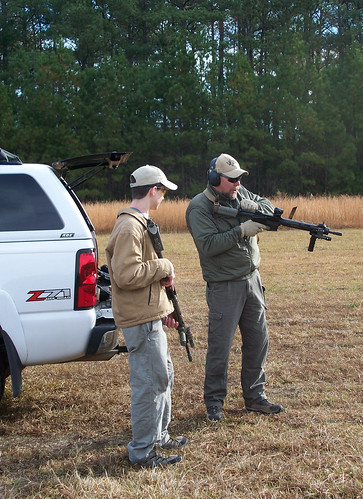 Soldiers, too, face danger on a daily basis. According to Kyle Lamb, they, however, can gain more from the equipment that is used in competition shooting than the actual techniques (Personal Interview). When police officers face danger, their ultimate goal is to get out of the line of fire and reassess the situation (Laferla). Soldiers, on the other hand, go into the line of fire in order to accomplish a mission and rarely have the time to take the time to take cover and reassess the situation. Equipment that originated out of competition shooting, such as quick draw holsters and three point slings (Lamb), are now used by soldiers due to their light weight and user friendly ease of movement. Lamb said that soldiers on a combat mission will employ a fire and maneuver technique, which means shooting at an enemy target to suppress the enemy?s ability to shoot back while closing the distance to eliminate the threat or capture the objective (Personal Interview). Most competitions use firing on the move in order to receive a higher score (Rayburn) thus enhancing a soldier’s skills to perform fire and maneuver tactics on a battlefield. The quick-draw holster and the three point sling allowed for greater mobility and reaction time in competitions and are for that reason now adopted as a large part of the military arsenal (Lamb).
Soldiers, too, face danger on a daily basis. According to Kyle Lamb, they, however, can gain more from the equipment that is used in competition shooting than the actual techniques (Personal Interview). When police officers face danger, their ultimate goal is to get out of the line of fire and reassess the situation (Laferla). Soldiers, on the other hand, go into the line of fire in order to accomplish a mission and rarely have the time to take the time to take cover and reassess the situation. Equipment that originated out of competition shooting, such as quick draw holsters and three point slings (Lamb), are now used by soldiers due to their light weight and user friendly ease of movement. Lamb said that soldiers on a combat mission will employ a fire and maneuver technique, which means shooting at an enemy target to suppress the enemy?s ability to shoot back while closing the distance to eliminate the threat or capture the objective (Personal Interview). Most competitions use firing on the move in order to receive a higher score (Rayburn) thus enhancing a soldier’s skills to perform fire and maneuver tactics on a battlefield. The quick-draw holster and the three point sling allowed for greater mobility and reaction time in competitions and are for that reason now adopted as a large part of the military arsenal (Lamb).
?Police officers that are involved in shootings are almost always engaging a target at 21 feet away or less (Rayburn). Most competitions involve shooting targets that are less than 10 yards or 30 feet away (Laferla). The fact that competition shooting involves shooting targets that are so close means that officers could benefit greatly from competing in that kind of competition. Learning to accurately hit targets repeatedly by practicing builds the muscle memory required to draw a weapon and quickly have it on target (Lamb), thus increasing one?s ability to defend themselves. The close targets that officers face in competition will allow them to more easily engage suspects at a close distance.
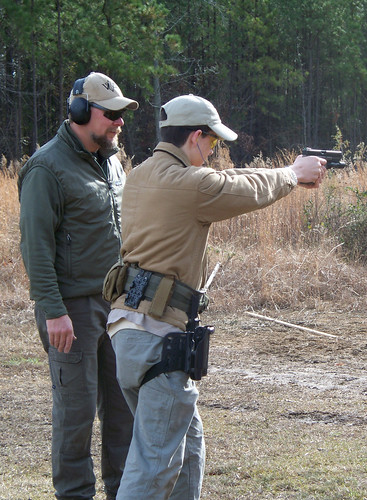 Competition shooting has been so influential in the world that even the United States Army and Marine Corps have started their own competition units. The goal of the United States Advanced Marksman Unit (also known by its acronym USAMU) is to raise the standards of shooting skills for the average US Army soldier through technical and advisory assistance (US Army). Created in 1956, the USAMU has won hundreds of international shooting competitions and drastically raised the average shooting skill of US Soldiers. The USAMU uses basically the same rules for competition as the United States Practical Shooting Association (or USPSA) meaning that the competitors have to deal with rapidly changing scenarios while shooting accurately and rapidly (Boudrie). The soldiers that serve in the USAMU demonstrate extreme proficiency with their weapons, and teach the average soldiers who does not know the vast techniques how to survive in many combat environments through demonstrating the tactics and techniques required to fight from any position (US Army).
Competition shooting has been so influential in the world that even the United States Army and Marine Corps have started their own competition units. The goal of the United States Advanced Marksman Unit (also known by its acronym USAMU) is to raise the standards of shooting skills for the average US Army soldier through technical and advisory assistance (US Army). Created in 1956, the USAMU has won hundreds of international shooting competitions and drastically raised the average shooting skill of US Soldiers. The USAMU uses basically the same rules for competition as the United States Practical Shooting Association (or USPSA) meaning that the competitors have to deal with rapidly changing scenarios while shooting accurately and rapidly (Boudrie). The soldiers that serve in the USAMU demonstrate extreme proficiency with their weapons, and teach the average soldiers who does not know the vast techniques how to survive in many combat environments through demonstrating the tactics and techniques required to fight from any position (US Army).
The skills and techniques learned through competition shooting help police forces to draw their handguns more quickly and put it on target in a manner that demonstrates extreme control and discipline. Competition shooting requires that a shooter not only wants to move during a gunfight but to shoot accurately while doing so (Rayburn). It teaches shooters to maintain a solid shooting platform with their body, thus allowing them to shoot accurately on the move (Rayburn). By moving in a gunfight, the officer will vastly cut down on the action versus reaction time lapse of the criminal and also make themselves a much more difficult target to be hit (Marcum). Police officers who engage in competition shooting on a fairly regular basis will be far better prepared to react if they ever have to be in an officer involved shooting than an officer who rarely or never competes in competition shooting because of the skills that are stated above.
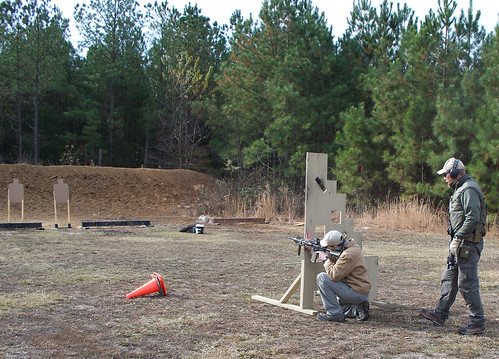 Soldiers who regularly compete in competition shooting or who know the skills, tactics or techniques required to shoot in competitions are more prepared for battle particularly in an urban environment than soldiers who have not competed before. They learn how to quickly react to threats posed by potential enemy forces because in order to successfully compete in a competition, a shooter has to quickly acquire and engage a target (Boudrie). Competition shooting greatly improves soldiers combat readiness for both urban and non-urban because the practice that arouses out of competition shooting builds the skills that apply to both competition and combat (US Army). The continued application of these skills through competition shooting teaches soldiers to work with their natural gun instincts rather than against them because they use them so often.
Soldiers who regularly compete in competition shooting or who know the skills, tactics or techniques required to shoot in competitions are more prepared for battle particularly in an urban environment than soldiers who have not competed before. They learn how to quickly react to threats posed by potential enemy forces because in order to successfully compete in a competition, a shooter has to quickly acquire and engage a target (Boudrie). Competition shooting greatly improves soldiers combat readiness for both urban and non-urban because the practice that arouses out of competition shooting builds the skills that apply to both competition and combat (US Army). The continued application of these skills through competition shooting teaches soldiers to work with their natural gun instincts rather than against them because they use them so often.
Also, regular competition teaches students, whether military or police, to find and advance their personal limitations. It is necessary to do so to know how to succeed and to be confident with one’s ability to succeed in a dangerous environment that is called combat (Marcum). Skills, tactics and a combat mindset that is required in order to be effective and survive an armed confrontation can and is learned through regular competition shooting (Rayburn). Competition shooting is often used in many occupations to train employees to be able to assess, react, defend themselves and survive in a wide range of dangerous environments. Shooters learn and benefit from actively participating in a competition shooting course by learning how to defend themselves and take the fight to the enemy rather than always being on the defensive. Throughout the last few decades, and it is projected to be so in the future, competition shooting has and will prove to benefit those whose jobs put them in harm’s way by giving them the necessary skills, techniques and equipment required to survive and succeed in a combat environment.
Editor’s Note: Viking Tactics produces an outstanding 2-point sling that is used by military, police, and many 3-gun competition shooters.
Kyle Lamb and Viking Tactics: www.vikingtactics.com
Works Cited
-
Boudrie, Robert. ?What is Competition Shooting?? United States Practical Shooting Association. 2006. 5 Sept. 2008. www.uspsa.org.
-
Laferla, Henry. ?What is Practical Shooting?? K Training. 2004. 22 Sept. 2008. www.ktraining.com.
-
Lamb, Kyle E. Green Eyes and Black Rifles. 2nd ed. Fayetteville, NC: Trample and Hurdle Publishing, 2008.
-
—. Personal Interview. 24 Sept. 2008.
-
Marcum, Gary. ?Competition Shooting.? Tac Pro Shooting Center. 2005. 22 Sept. 2008. www.tacproshootingcenter.com/facilities.html.
-
US Army. ?Home of Champions.? United States Army Marksmanship Unit. 2007. 15 Sept. 2008. www.usaac.army.mil/amu/.
-
Rayburn, Mike. ?Shooting on the Move.? Police One. 2004. 22 Sept. 2008. www.policeone.com/writers/columnists/PoliceMagazine/articles/77165/ .
Copyright & Published By: Junior Shooters & Junior Sports Magazines Inc. April 2009

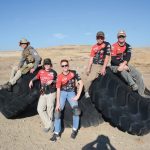
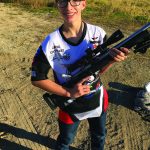
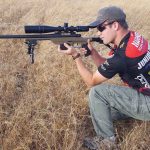

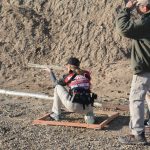
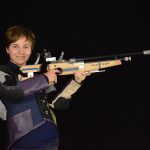
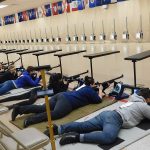
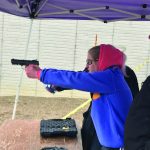
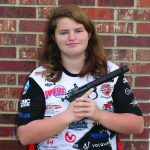
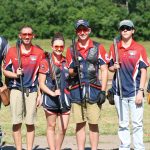
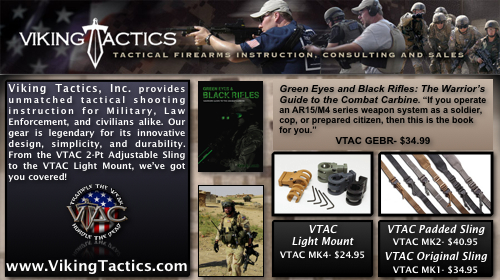


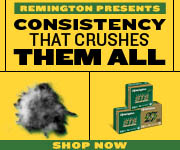



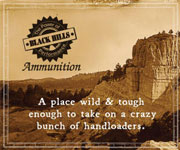
It took setbacks for me to learn also, and think its the case for a lot of people, its a marathon not a sprint.
I agree. Thank you for your comment.
Good overall site enjoyed reading will def bookmark.
Thank you
Love your post. This is great information, and I’m really glad I found it. Keep up the good work.
[…] their level. There is another site thats just dedicated to juniors and does extremely well called Junior Shooters. In Australia they have SSAA and they work with different groups and have program’s setup […]
Yes, all over the country. Go to our website and look under EVENTS on the catagory bar at the top. This lists a wide variety of organizations that have junior programs. Also, almost every shooting discipline out their that has shooting competitions has junior divisions.